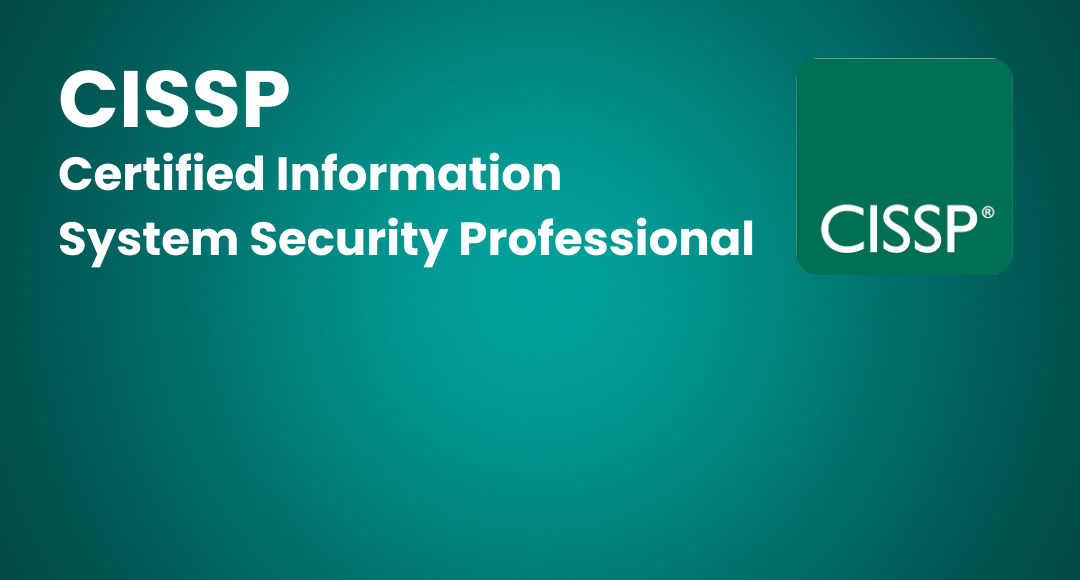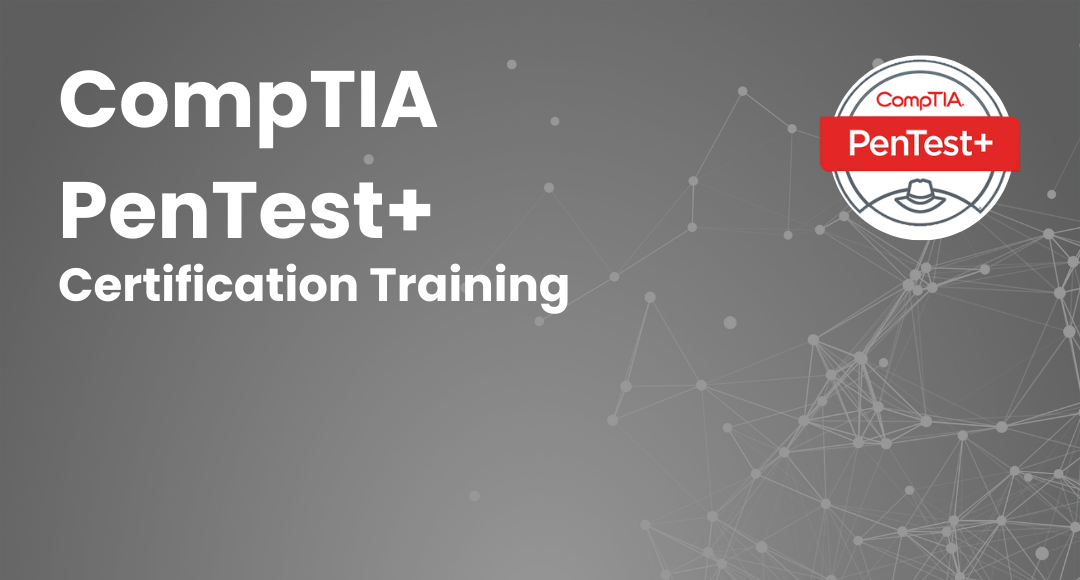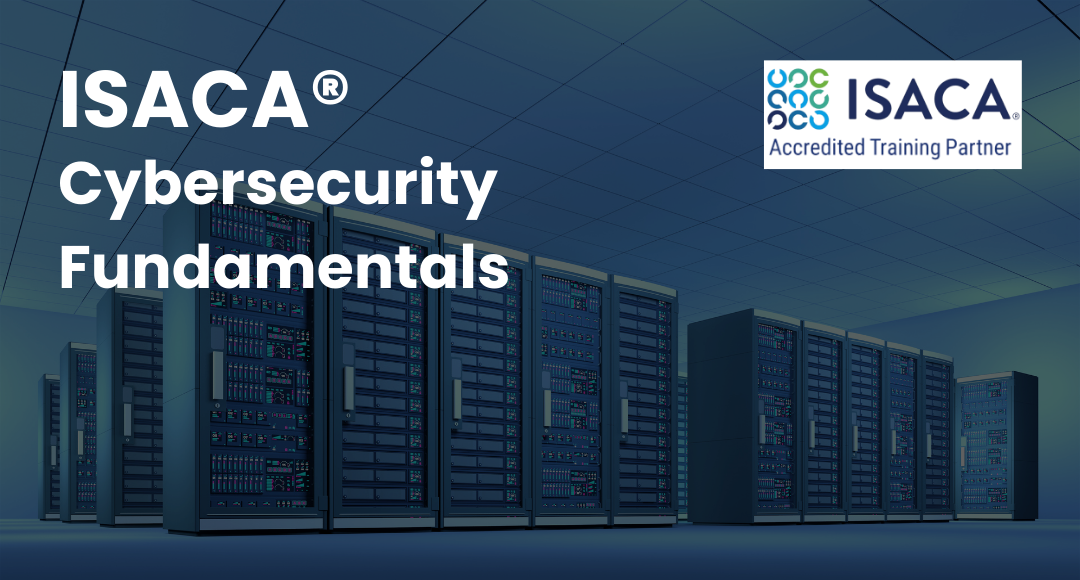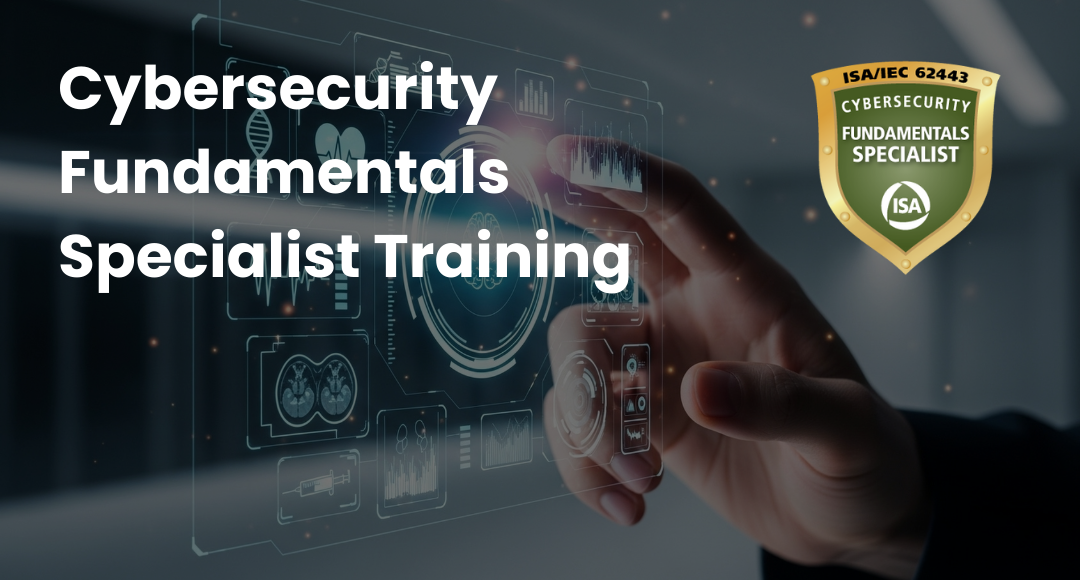Risk-based Audit Planning Guide for Beginners
-
 By Nchumbeni Yanthan
By Nchumbeni Yanthan - Published on Dec 6 2023

Table of Contents
- Introduction to Risk-Based Audit Planning
- Understanding the Audit Process Basics
- Risk Assessment Fundamentals
- The Role of Risk in Audit Planning
- Benefits of Risk-Based Audit Planning
- Steps in Risk-Based Audit Planning
- Implementation of Effective Audit Procedures
- Mastering Risk-based Planning for a Thriving IT Security Career
- Conclusion
- FAQs
Introduction to Risk-Based Audit Planning
Risk-based audit planning stands as a dynamic and evolving process, elevating the significance and efficiency of audits by incorporating cybersecurity. It tailors them to an organization's unique risks. This strategic method empowers auditors to concentrate efforts where they truly matter, actively contributing to the broader risk management framework.
Operating as a strategic approach, it zeroes in on identifying and evaluating risks within an organization. The primary aim is to optimize audit resources and bolster the overall effectiveness of the audit process. This methodology acknowledges the diversity of risk levels across different organizational areas, intending to allocate audit resources based on the gravity of these risks.
Ultimately, the objective is to assure that financial statements remain devoid of material misstatements, and critical business processes operate with effectiveness. In embracing risk based audit planning, auditors play a vital role in upholding the integrity of financial reporting and ensuring the robust functionality of key business operations.
Understanding the Audit Process Basics
The audit process involves a systematic examination of an organization's financial statements by external auditors to ensure accuracy and compliance. Beginning with risk-based audit planning and engagement planning, auditors evaluate client suitability, internal controls, and conduct substantive procedures to gather evidence.
A review of financial statements follows, leading to the issuance of an opinion and, if necessary, recommendations in a management letter.

Effective communication, meticulous documentation, and adherence to quality control measures are integral. Upholding principles of independence and professional skepticism, the audit process is crucial for providing stakeholders with assurance about the reliability of an organization's financial information, fostering transparency and trust in financial reporting.
Risk Assessment Fundamentals
Let us delve into the fundamental aspects of auditing:
Strategic Planning
Auditors commence with meticulous planning, strategically identifying focal areas, potential risks, and allocating resources judiciously. This initial phase is akin to developing a comprehensive roadmap for a secure and effective audit journey.
Methodical Fieldwork
Transitioning into the fieldwork phase, auditors adopt a methodical investigative approach. They collect pertinent evidence, conduct thorough inquiries, and scrutinize details. It resembles the diligence of a detective resolving a numerical mystery.
Comprehensive Reporting
The conclusive reporting stage entails the dissemination of findings. A positive alignment signifies operational excellence, while identified discrepancies prompt constructive recommendations for enhancement—a conclusive evaluation contributing to the overall health of the business.
The Role of Risk in Audit Planning
Risk plays a fundamental role in audit planning, influencing the auditor's approach to ensure that the audit is effective and focused on areas of potential concern. The key aspects of the role of risk in audit planning include:
Risk Assessment
Auditors assess the risk of material misstatement in the financial statements. This involves evaluating both inherent risk (the susceptibility of an assertion to a material misstatement, without considering internal controls) and control risk (the risk that a material misstatement will not be prevented or detected by internal controls).
Materiality Determination
The level of materiality is often linked to the assessed risks. Higher risks may lead to a lower acceptable level of materiality, prompting more detailed and extensive audit procedures.
Audit Strategy
The level of risk influences the overall audit strategy. Higher-risk areas may require more substantive testing, while lower-risk areas may rely more on tests of controls.
Focus on High-Risk Areas
Audit planning prioritizes high-risk areas, ensuring that these receive more attention and resources during the audit process. This targeted approach is essential for effective risk mitigation.
Tailored Audit Procedures
The nature, timing, and extent of audit procedures are customized based on the assessed risks. High-risk areas may require more rigorous and extensive testing to obtain sufficient audit evidence.
Response to Risk Assessment
If the auditor identifies significant risks, they must design appropriate responses. This could involve additional audit procedures, a reassessment of materiality, or changes to the overall audit strategy.
Communication with Management
The auditor communicates identified risks to management, facilitating a mutual understanding of potential issues and providing an opportunity for management to address concerns.
Continual Risk Assessment
Risk assessment is not a one-time activity. Throughout the audit, auditors continually reassess risks based on new information and findings, adjusting the audit approach as necessary.
By integrating risk assessment into audit planning, auditors can focus their efforts on areas most susceptible to material misstatement, ensuring a targeted and efficient audit process. This risk-based approach enhances the overall quality and effectiveness of the audit in providing assurance on the reliability of financial statements.
Benefits of Risk-Based Audit Planning
The risk-based audit planning benefits involves,
Efficiency
Allocates audit resources efficiently by focusing on high-risk areas.
Relevance
Ensures that audit procedures are relevant to the specific risks faced by the organization.
Timeliness
Enhances the timeliness of the audit process by prioritizing critical areas.
Value Addition:
Provides value-added insights to management by addressing key risks and suggesting improvements.
Steps in Risk-Based Audit Planning
Here are the brief steps to risk-based audit planning,
Understand the Business and Industry
Gain a comprehensive understanding of the organization's industry, operations, and key business processes.
Identify and Assess Risks
Identify and assess risks that could impact the financial statements and business operations. This involves evaluating internal and external factors.
Set Materiality Levels
Determine materiality levels for financial statements. This involves setting a threshold for what is considered significant in the context of the organization's size and industry.
Assess Inherent and Control Risks
Evaluate inherent and control risks associated with specific financial statement accounts and business processes.
Design Audit Procedures
Develop audit procedures that are responsive to the identified risks. Focus on areas with higher inherent and control risks.
Allocate Resources
Develop audit procedures that are responsive to the identified risks. Focus on areas with higher inherent and control risks as per the risk-based audit strategy.
Continuous Monitoring
Implement continuous monitoring processes to stay informed about changes in the business environment and to adjust audit plans accordingly.
Document the Plan
Document the entire risk-based audit plan, including the identified risks, materiality thresholds, audit procedures, and resource allocation.
Implementation of Effective Audit Procedures
Effective audit procedures involve a targeted, risk-informed approach. Setting materiality thresholds and customizing the audit plan based on identified risks ensure focused examinations.

Application of analytical procedures aids anomaly detection, while transparent documentation and open communication with management facilitate a streamlined process.
Rigorous quality control measures ensure adherence to standards, and continuous monitoring enables adaptive strategies. This approach, emphasizing efficiency and clarity, instills confidence in stakeholders about the reliability of financial information.
Mastering Risk-based Planning for a Thriving IT Security Career
For those eyeing a thriving career in IT security, mastering risk-based planning is crucial.
Master CISA Framework:
Understand the CISA® framework thoroughly, covering key domains such as Information System Auditing Process and Governance.
Training Alignment:
Enroll in comprehensive training aligned with CISA principles, focusing on risk-based planning, assessment methodologies, and mitigation strategies. You can enhance knowledge with Sprintzeal's CISA® certification training, aligning with industry standards.
Practical Experience:
Gain hands-on experience in applying risk-based planning in simulated scenarios or real-world projects. Embark on the journey of cybersecurity learning with a certification designed for beginners.
Stay Informed:
Stay updated on IT security trends through industry publications, conferences, and webinars.
Networking and Development:
Network within the IT security community, join professional organizations, and engage in forums for continuous learning and industry connections.
Conclusion
Risk-based audit planning stands as a critical tool for organizational success. In conclusion, for beginners venturing into risk-based audit planning, the journey marks the foundation of a rewarding auditing career. Embracing principles such as risk assessment, materiality, and tailored procedures enables a focused and efficient audit process.
Transparency, communication, and a commitment to continuous improvement are pivotal. Mastering these fundamentals not only contributes to financial reporting integrity but also sets the stage for professional growth. Remember, risk-based audit planning is a skill that evolves with experience.
As you embark on your journey into auditing, consider furthering your professional development with certifications like CISSP® and Cybersecurity Fundamentals ISACA®. These certifications not only validate your expertise but also open doors to new opportunities and advancements in the field. Stay ahead of the rapidly evolving world of cybersecurity by chatting with our experts for course assistance! Subscribe to Sprintzeal's newsletters and ebooks and gain a competitive edge through the latest industry trends, best practices, and in-depth knowledge.
FAQs
How do you create a risk-based audit plan?
Creating a risk-based audit plan involves several key steps. Begin by identifying and assessing potential risks to the organization. Prioritize these risks based on their potential impact and likelihood. Finally, develop audit procedures specifically addressing the identified risks, ensuring a focused and strategic approach to the audit.
What is the first step in risk-based audit?
The first step in risk-based audit planning is defining the audit objectives. Clearly stating what the audit aims to achieve sets the foundation for the entire process. Ensure these objectives align with the organization's goals and consider potential risks that may impact those goals.
What are the five steps in planning an audit?
The five key steps in planning an audit are:
- Define Audit Objectives: Clearly state what the audit aims to achieve.
- Identify Risks: Recognize potential risks to the organization.
- Assess Risks: Evaluate the impact and likelihood of identified risks.
- Develop Audit Procedures: Create procedures tailored to address the identified risks.
- Allocate Resources: Determine the necessary resources for effective audit execution.
What are the five types of risk audit approach?
The five types of risk audit approaches are:
- Inherent Risk Approach: Assessing risks inherent to the business environment.
- Control Risk Approach: Evaluating the effectiveness of internal controls.
- Detection Risk Approach: Analyzing the risk of not detecting material misstatements.
- Business Risk Approach: Focusing on risks that impact business objectives.
- Audit Risk Model Approach: Balancing inherent, control, and detection risks in the audit process.
Subscribe to our Newsletters
Popular Programs
CISSP® - Certified Information System Security Professional
Live Virtual Training
- 4 (964 + Ratings)
- 2k + Learners
CISM® - Certified Information Security Manager
Live Virtual Training
- 4.6 (200 + Ratings)
- 31k + Learners
Trending Posts
What is Cryptography - A Comprehensive Guide
Last updated on Jun 28 2023
Top Cybersecurity Software Tools In 2026
Last updated on Jan 22 2024
How Did Capital One Respond to Their Major Cyber Incident?
Last updated on Dec 17 2024
What Is Secure Access Service Edge (SASE)?
Last updated on Oct 15 2024
Safeguarding Digital Domain: 10 Most Common Cybercrimes
Last updated on Aug 14 2023
Which Cybersecurity Certification Should I Get First?
Last updated on Feb 21 2024
Categories
- Other 69
- Agile Management 48
- Cloud Computing 57
- Project Management 174
- Big Data 66
- Business Management 88
- Digital Marketing 79
- IT Service Management 29
- Programming Language 59
- AI and Machine Learning 78
- IT Security 112
- Quality Management 78
- IT Hardware and Networking 26
- Microsoft Program 4
- Workplace Skill Building 13
- Risk Management 9
- Information Security 8
- Leadership and Management 9
- Corporate Training and Development 1
Trending Now
Top 5 Compelling Reasons To Get A Cyber Security Certification
ebookHow to Become IT Security Expert with CISSP Certification
ebookTop 20 Reasons You Should Get a CISSP Certification
ebookWhat is CISSP? – Everything about CISSP Certification Explained
ebookPass CISSP Exam - How to Clear CISSP Exam in First Attempt 2026 (UPDATED)
ebookCISSP Certification – Top 25 Career Benefits in 2026
ebookCybersecurity – Everything You Need to Know About it
ebookUpdated Google Certification Training Course list 2026
ArticleWhich Certification is best for Cybersecurity?
ebookWhich Cybersecurity Certification Should I Get First?
ebookCysa+ certification – Should you get it?
ebookList of Top Security Certifications
ArticleEasiest Security Certification to Get
ebookCISM certification cost and career benefits
ebookCybersecurity Fundamentals Explained
ebookISACA Certifications List 2026
ebookCareer Benefits of CISM Certification in 2026
ArticleList of Top Information Security Certifications in 2026
ebookCISM certification cost details
ArticleMitigate the Cyber-Attack Risks with Best Cyber Security Protocols
ebookCybersecurity Interview Questions and Answers 2026
ebookTop Cybersecurity Software Tools In 2026
ebookInformation Security Analyst - Career, Job Role, and Top Certifications
ebookCyber Security Analyst - How to Become, Job Demand and Top Certifications
ebookWhat is Data Security - Types, Strategy, Compliance and Regulations
ebookData loss Prevention in Cyber Security Explained
ebookCybersecurity Controls Explained in Detail
ebookCybersecurity Framework - A Complete Guide
ebookWhat is Cryptography - A Comprehensive Guide
ebookData Leak - What is it, Prevention and Solutions
ebookCybersecurity Career Paths Guide
ebookFuture of Cybersecurity - Trends and Scope
ebookCyber Security Careers and Outlook - 2026 Guide
ebook5 Cybersecurity Predictions in 2026 - Trends and Challenges
ebookScope for Cybersecurity in 2026 - Latest Update
ebookEthical Hacking Career: A Career Guide for Ethical Hacker
ebookApplication Security: All You Need To Know
ebookCybersecurity Roles - Top Roles and Skills to Consider in 2026
ebookHow to Get Cyber Essentials Certified
ebookTop 10 Cyber Security Threats and How to Prevent Them
ebookTop 10 Network Scanning Tools of 2026
ebookCyber Incident Response Plan: A Comprehensive Guide
ebookInformation Assurance Careers - Exploring Career Paths
ebookWhat is the Department of Defense (DoD) Directive 8140
ebookCybersecurity Mesh Architecture: What It Is and How to Build It
ebookWhat is Threat Modeling? Methodologies, Types, and Steps
ebookWhat is Digital Forensics? Types, Process & Challenges
ebookInformation Assurance Model in Cybersecurity
ebookHow to Become an Information Security Analyst Salary, Skills, and More
ArticleList of Top Department of Defense (DoD) Approved 8570 Certification Courses
ebookTop 5 Ransomware Attacks to Watch Out for in 2026
ebookJob Prospects for DoD Certified Professionals: A Pathway to Success in cybersecurity
ebook10 Biggest Data Breaches of the 21st Century
ebookWhat is a Cybersecurity Incident?-Types, Impact, Response Process and More
ebookCyber Security Planning - A Detailed Guide for Risk Mitigation
ebookWhat is Cybercrime? Exploring Types, Examples, and Prevention
ebookRecent Cyber Attacks & Data Breaches in 2026
ebookCybersecurity Strategy: Building a Strong Defense for Business
ebookCybercrime Impacts On Business: 6 Major Effects
ebook5 Types of Cyber Attacks You Should Be Aware of in 2026
ebookCloud Cyber Attacks: Causes, Types, Prevention and Protection
ebookCloud Malware: Types of Attacks and Security Measure
ebookCyber Attack Statistics and Trends to Know in 2026
ebookList Of Top Cybersecurity Threats In 2026
ebookSafeguarding Digital Domain: 10 Most Common Cybercrimes
ebookDemystifying Cloud-Based Cyber Attacks: A Comprehensive Guide
ebookPrevent Cyber Attacks: Strategies to Protect Your Digital Assets
ebookList of Top 10 Cybersecurity Careers in 2026
ebookTop 20 Cybersecurity Trends to Watch Out for in 2026
ArticleHow to Become Cybersecurity Engineer
ArticleUnderstanding Risk assessment in audit planning
ArticleFundamentals of Risk-Based Auditing: A Strategic Framework
ArticleTop 8 Types of Cybersecurity Jobs and Salary Insights
ArticleA Comprehensive Guide to Building Risk-Based Internal Audit Plan
ArticleRisk-Based Internal Auditing Approaches: 7 Steps to Explore
ArticleCompTIA Security+ 601 vs. 701: Understanding Key Differences
ArticleWhy and How to Perform a Risk-Based Internal Audit
ArticleRisk-Based Auditing Techniques Explained
ebookEvolving Cyber Threats and Vulnerabilities in Cybersecurity Risk Management
ArticleWhat Is Secure Access Service Edge (SASE)?
ArticleHow to Stay Cyber-Secure in Work and Personal Life (Tips and Practices)
ArticleIBM Data Breach: Is IBM Really Breach-Proof?
ArticleTarget Cyber Attack: Key Lessons from the 2013 Data Breach
ArticleLinkedIn User Data Protection Explained
ArticleCanva Data Breach: Best Lessons for Users and Businesses
ArticleHow Did Capital One Respond to Their Major Cyber Incident?
ArticleWhat Innovative Measures Did Reddit Take to Protect User Data?
ArticleHow Does Slack Respond to Security Challenges?
ArticleTwitch Data Breach: Response, Changes, and Key Takeaways
ArticleGuess What Google Did When a Employee Breached Their Firmware
ArticleEthical Hacking Tools: Best Ones for Cybersecurity in 2026
ArticleWhat Happened When Cisco Faced a Cyber Incident?
ArticleWhat Sony Did to Rebuild Trust After a Major Cyberattack
ArticleHow to Handle a Data Breach? Learn from Microsoft!
ArticleCybersecurity Mesh: A New Approach for Security Design
ArticleHow Target Turned a Cyber Crisis into a Lesson for All
ArticleDropbox Data Breach: What Companies Can Learn from It
ArticleHow JPMorgan Chase Strengthened Security After Facing Cyber Threats
ArticleThe Future of Online Security: Trends to Watch in 2026
ArticleLatest Trends in CyberSecurity
ArticleTop 12 Cyber Security Apprenticeships with High Earning Potential in 2026
ArticleEnhancing Safety and Competence in Today's Workplace
ArticlePrivacy at Your Fingertips: How iPhone Users Can Use Tools Securely
ArticleAge Matters: Understanding the Generational Gap in Online Safety Education
ArticleCybersecurity 101: Why Cybersecurity is the Hottest Career Right Now
ArticleWhy Cybersecurity Training Should Be Part of Every Professional's Career Plan
ArticleHow to Protect Your Data When Traveling to Countries Like Malaysia?
ArticleTop Online Master's in Cybersecurity Programs for Working Professionals
ArticleHow AI Detectors Strengthen Cybersecurity in Modern Networks
ArticleHow to Become a Cybersecurity Engineer: Step-by-Step Career Guide
ArticleWhy Certification in Risk and Compliance Is Critical in Today’s Financial World
Article


















